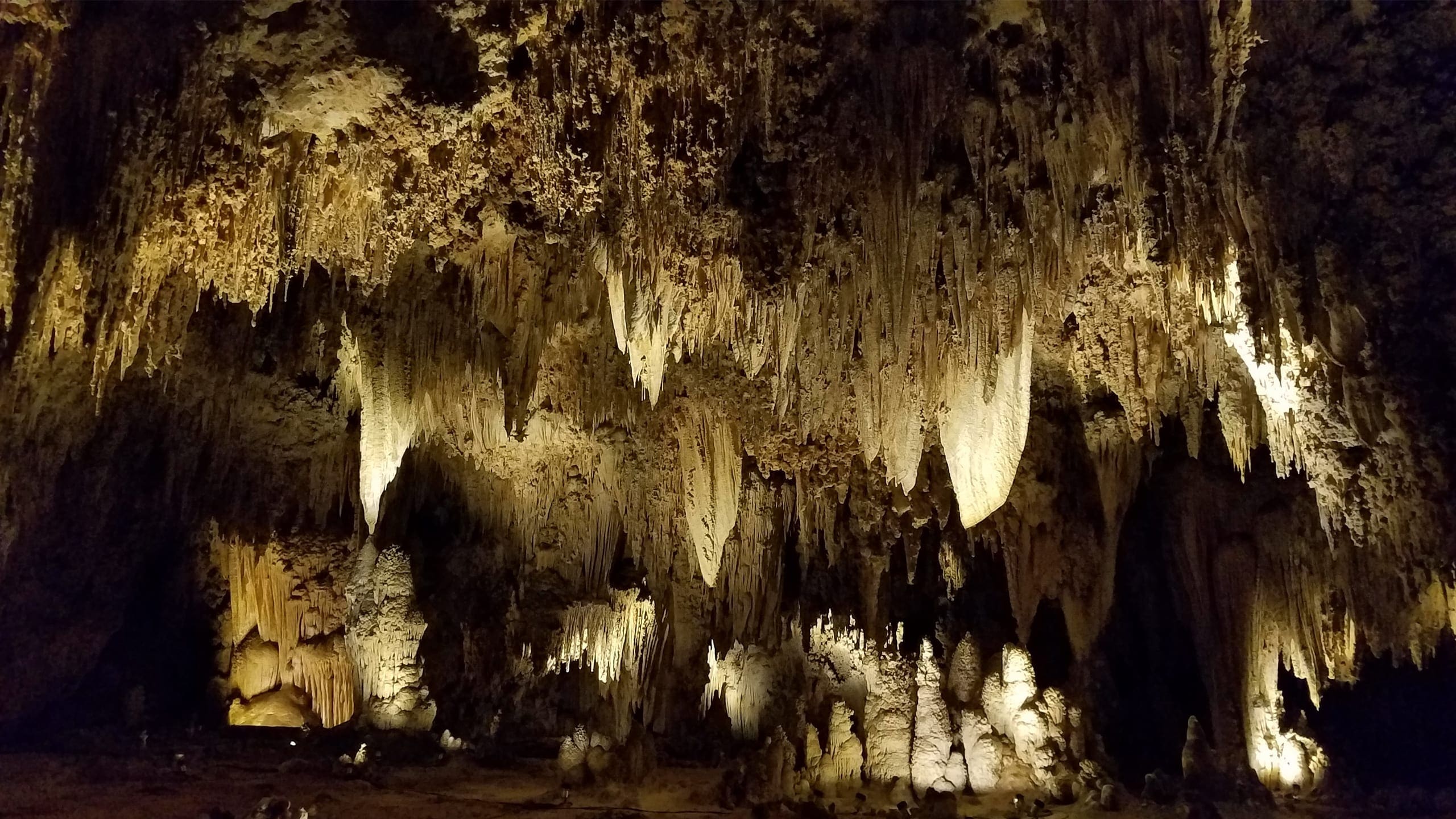About Carlsbad Caverns National Park
Established as a unit of the national park system in 1923, Carlsbad Caverns National Park preserves Carlsbad Cavern and more than 120 other known caves including Lechuguilla Cave, the nation’s second deepest limestone cave at 1,604 feet and the world’s seventh longest cave. The caves formed over the last 20 million years as sulfuric acid dissolved the surrounding limestone of the ancient reef. The park also protects an extraordinary and unique ecological association of bats, cave climate, speleothems, hydrology, cave fauna, and microbes. In 1995, the United Nations recognized the worldwide significance of the spectacular resources of Carlsbad Caverns National Park by designating it as a World Heritage Site. Visitation at the park totaled more than 440,000 in 2015.
Carlsbad Caverns National Park is located in the Guadalupe Mountains, a mountain range that runs from west Texas into southeastern New Mexico. The Guadalupe Mountains are the uplifted portion of an ancient reef that thrived along the edge of an inland sea more than 250 million years ago during the geologic time period known as the Permian Period.
The park encompasses 46,766 acres in the Chihuahuan Desert of southeastern New Mexico, with more than 33,000 acres designated by Congress as wilderness in 1978. The park is one of the few places where portions of this desert are preserved and protected.
The park supports a diverse ecosystem, including habitat for many plants and animals that are at the geographic limits of their ranges. For example, the ponderosa pine reaches its extreme eastern limit here and several species of reptiles are at the edges of their distributions. The park also provides important habitat for top predators such as cougars, and is home to what is perhaps the largest colony of cave swallows in the northern hemisphere. The Bat Cave area in Carlsbad Cavern provides important habitat for a large colony of Brazilian free-tailed bats as a place to give birth and raise young, as well as a stopover from migration.
The park’s cultural resources represent a long and varied continuum of human use and adaptation to the Chihuahuan Desert environment dating to the late Pleistocene Epoch. Twelve to fourteen thousand years ago, American Indians lived in the Guadalupe Mountains; some of their cooking ring sites and pictographs have been found within the present day boundaries of the park. By the 1500s, Spanish explorers were passing through present-day west Texas and southeastern New Mexico. Spain claimed the southwest until 1821 when Mexico revolted and claimed independence. Mexico lost the southwest to the United States at the end of the MexicanAmerican War in 1848. For the next 40 years, conflict persisted in the Carlsbad area between several American Indian tribes and the U.S. government. Human activities, including prehistoric and historic American Indian occupations, homesteading and ranching, guano mining, and resource preservation and tourism, have contributed to the rich and diverse history of the area.
The park has two historic districts in the National Register of Historic Places—the Carlsbad Caverns Historic District and the Rattlesnake Springs Historic District, which include 30 historic structures. The park museum, including the park archives, contains approximately 1 million cultural resource artifacts.
Source: Foundation Document Overview – Carlsbad Caverns National Park


